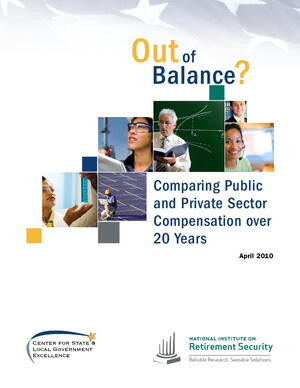
Key findings include:
Jobs in the public sector typically require more education than private sector positions. State and local employees are twice as likely to hold a college degree or higher as compared to private sector employees. Only 23 percent of private sector employees have completed college, as compared to about 48 percent in the public sector.
Wages and salaries of state and local employees are lower than those for private sector employees with comparable earnings determinants, such as education and work experience. State workers typically earn 11 percent less and local workers 12 percent less.
During the last 15 years, the pay gap has grown: earnings for state and local workers have generally declined relative to comparable private sector employees.
The pattern of declining relative earnings remains true in most of the large states examined in the study, although there does exist some state level variation.
Benefits make up a slightly larger share of compensation for the state and local sector. But even after accounting for the value of retirement, healthcare, and other benefits, state and local employees earn less than private sector counterparts. On average, total compensation is 6.8 percent lower for state employees and 7.4 percent lower for local employees than for comparable private sector employees.
